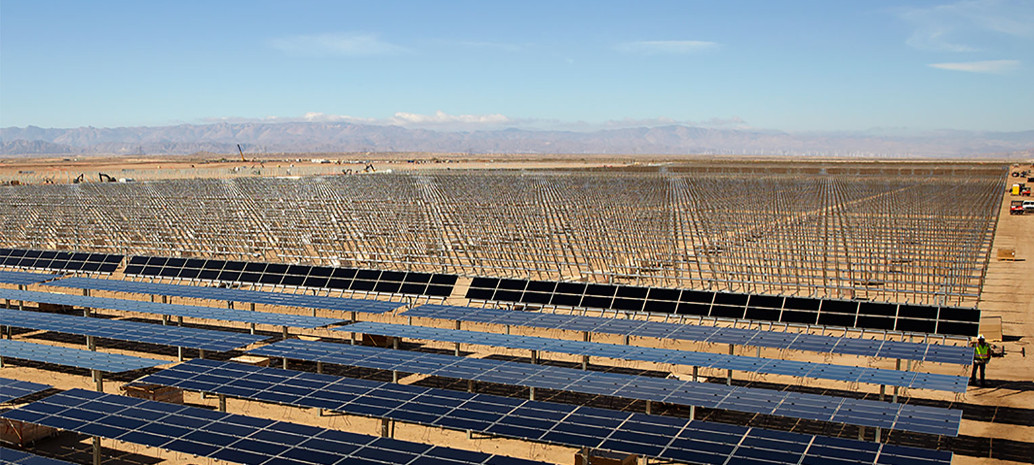Five years ago, developers were racing against each other to see who could build the biggest solar plant, with projects like First Solar’s 550 MW Desert Sunlight and Topaz Solar Farms, and SunPower’s 579 MW Solar Star beginning construction in the California desert.
But by the time these projects reached completion in 2014 and 2015, the industry had switched gears, and smaller utility-scale projects were becoming more the norm.
On Tuesday Nebraska’s Tenaska announced the commissioning of the 150 MW Tenaska Imperial Solar Energy Center West, which comprises no less than 1.8 million First Solar thin-film PV modules, in California’s Imperial Valley. The project was begun only two years ago, making it a rare hold-over from the days when projects over 100 megawatts were standard.
The Imperial Solar Energy Center West follows on Tenaska’s 130 MW Imperial Solar Energy Center South, which started construction in 2011. Tenaska provided construction services for both projects.
The Imperial Solar Energy Center South was the first to connect to the new Sunrise Powerlink in 2013, and the West project will also connect to this transmission line. Sunrise Powerlink brings power from wind and solar projects in the sparsely populated Imperial Valley to the San Diego metro area.
“Sunrise Powerlink is the foundation for giving all of our customers’ access to renewable energy,” says San Diego Gas & Electric (SDG&E) VP of Energy Procurement Emily Shults. “We look forward to all of the innovations on the horizon that will unlock clean, safe and affordable energy choices for our customers.”
Of California’s three large investor-owned utilities, SDG&E is the farthest ahead in deployment of renewables, and the Imperial Solar Energy Center West will augment the utility’s significant progress.
In 2014 SDG&E was already getting 34% of its power from renewable energy, and has enough projects under contract to reach 43% by 2020, which puts it in a good position to reach the state’s 50% by 2030 mandate ahead of time.
This content is protected by copyright and may not be reused. If you want to cooperate with us and would like to reuse some of our content, please contact: editors@pv-magazine.com.









By submitting this form you agree to pv magazine using your data for the purposes of publishing your comment.
Your personal data will only be disclosed or otherwise transmitted to third parties for the purposes of spam filtering or if this is necessary for technical maintenance of the website. Any other transfer to third parties will not take place unless this is justified on the basis of applicable data protection regulations or if pv magazine is legally obliged to do so.
You may revoke this consent at any time with effect for the future, in which case your personal data will be deleted immediately. Otherwise, your data will be deleted if pv magazine has processed your request or the purpose of data storage is fulfilled.
Further information on data privacy can be found in our Data Protection Policy.